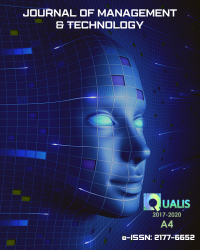Russian bloggers’ mirror of Chinese culture: cultural communication and image construction from the perspective of others
DOI:
https://doi.org/10.20397/2177-6652/2024.v24i4.2983Palavras-chave:
Russian bloggers, overseas audience, Chinese image, cross-cultural communicationResumo
In the era of the rise of self-media, the perspective of others plays an important role in the shaping of national image and cross-cultural communication. Russian bloggers provide new possibilities for the international dissemination of Chinese culture and the construction of China's national image. In this research, we select the five most watched videos of Russian bloggers with the largest number of followers on the YouTube platform related to China as the research objects, and through the analysis of video content and audience comments, we explore the “stereotypes” that exist in the overseas audience from the dimensions of the audience's emotion and the content of the videos. Through video content analysis and audience comment analysis, we summarize the Chinese cultural elements, expressions and opinions that overseas audiences are interested in. In this way, we can effectively weaken the cultural differences between China and Russia, optimize the theme structure of cultural communication, play a good role in building China's national image, to promote the development of Chinese culture in Russia and other Russian-speaking countries.
Referências
Alimova, M., Abdullaeva, M., Tungatova, U., Karimova, D., Alidjanova, L., & Turambetov, N. (2023). Influence of Religious Myth on National and Political Formation Across Cultures. Cuestiones Políticas, 41(77).
Bekbenbetova, K., Baltabayeva, G., Aimbetova, U., Smagulova, K., & Kemerbay, R. (2022). Social and philosophical research structures of drama and folk narratives: the manifestations of embodied world views. XLinguae, 15(1), 14-22.
Borodina, M. (2021). Impact of the Google Translate Machine Translation System on the Quality of Training Student Translators. Webology, 68–78. https://doi.org/10.14704/web/v18si05/web18214
Boulding, K. (1956). The Image: Knowledge in Life and Society. Ann Arbor: University of Michigan Press.
Fang, J.C., & Luo, B. (2017). Research on “others” in cross-cultural communication. News Forum, 2, 116-118.
Gong, W.X. (2017). National image and Cross-cultural communication: Both on the issue of stereotypes. Sino-Foreign Cultural Exchange, 11, 4.
Hall, S. (2001). Encoding/Decoding. Media and Cultural Studies. Keywords. London: Blackwell Publishers.
Hernández García de Velazco, J. J. (2022). Sociedades del conocimiento y ciencia abierta en la nueva normalidad. JURÍDICAS CUC, 18(1), 1–4. Recuperado a partir de https://revistascientificas.cuc.edu.co/juridicascuc/article/view/4475
Larry, A. (2015). Communication between cultures. Beijing: Renmin University of China Press.
Li, Z. (2013). International communication. Beijing: Renmin University of China Press.
Liu, J.N., & He, H. (2006). China's image-The current situation and countermeasures of the international dissemination of China's national image. Beijing: Communication University of China Press.
Lu, M., & Ma, E. (2022). The construction of national image by individual image narratives in overseas social media--Taking YouTube video bloggers as an example. News Lovers, 3, 53-57.
Sergeeva, N. A., Zakharova, A. N., Tyutyunnik, S. I., & Rubleva, O. S. (2021). Features of using methods and means of the augmented reality technology when teaching a foreign language. Perspektivy nauki i obrazovania – Perspectives of Science and Education, 50 (2), 472-486. 10.32744/pse.2021.2.33 https://pnojournal.wordpress.com/2021/05/04/sergeeva/
Stavruk, M., Beloglazova, L., Polozhentseva, I., Shapauov, A., Safonova, E., Orekhova, O., Rets, N., Malukina, G., Abramova, O., & Godzinevskaya, S. (2023). Using Smart Devices in Forming the Foreign Language Competency of Economics Students, Journal of Language Teaching and Research, 14 (5), 1181-1188. https://jltr.academypublication.com/index.php/jltr/article/view/6625
Tolmachev, M., Korotaeva, I., Zharov, A., & Beloglazova, L. (2022). Development of Students’ Digital Competence When Using the “Oracle” Electronic Portal. European Journal of Contemporary Education, 11(4). https://doi.org/10.13187/ejced.2022.4.1261
Volkova, P.S. (2023) Art In The Aspect Of Dialog. On The Question Of Educational Philosophy. Art Criticism, 1, 6-14.
Wang, J. (2006). Power and Reputation-A study on China's national image and its construction in the United States. Unpublished doctoral dissertation, Fudan University, Shanghai.
Wu, X., & Chelyapina, C. (2023). The Semiosphere as a Generator of Intra- and Intercultural Translations. Southern Semiotic Review, 2023 i (17), 211–224. https://doi.org/10.33234/ssr.17.11
Yao, X., & Wang, J. (2014). The influencing factor model and promotion path of cross-cultural communication of international brands--an exploratory study based on rooted theory. Journalism and Communication Research, 21(3), 34-51.
Downloads
Publicado
Como Citar
Edição
Seção
Licença
Copyright (c) 2024 Revista Gestão & Tecnologia

Este trabalho está licenciado sob uma licença Creative Commons Attribution-NonCommercial 4.0 International License.
Os direitos, inclusive os de tradução, são reservados. É permitido citar parte de artigos sem autorização prévia desde que seja identificada a fonte. A reprodução total de artigos é proibida. Em caso de dúvidas, consulte o Editor.


